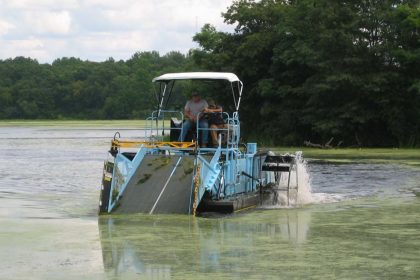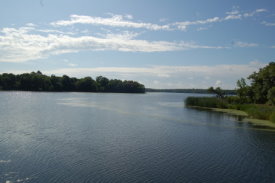
As the harvest season winds down, aquatic weed harvesters across the region are being pulled from the water and stored for winter. For many lake districts, this time of year brings a chance to reflect on the season’s results—and the numbers out of Polk County are impressive.
The Apple River Protection and Rehabilitation District (ARPRD) reported removing roughly 2.73 million pounds of aquatic vegetation from the Apple River Flowage as of June of this year. This follows back-to-back years where totals reached around 3.8 million pounds, highlighting a consistent and highly productive management program.
Keeping the Flowage Open and Healthy
The 640-acre Apple River Flowage sits within a watershed that covers more than 111,000 acres. As with many Wisconsin waterways, invasive and fast-growing native plants—like coontail and curly-leaf pondweed—can quickly limit boating access, trap nutrients, and reduce dissolved oxygen levels if left unmanaged.
Through consistent mechanical harvesting, the ARPRD helps maintain navigation channels, improve water flow, and reduce the buildup of decaying plant matter that can lead to poor water quality. Unlike chemical treatments, mechanical removal takes the vegetation out of the water entirely, helping reduce nutrient recycling and long-term regrowth.

A Sustainable Approach to Aquatic Management
Mechanical harvesting is one of the most effective and environmentally responsible tools for managing dense aquatic growth. By physically removing weeds rather than killing them in place, this method helps protect fish habitat, limit algae growth, and keep waterways open for recreation.
The Apple River Flowage’s ongoing success shows how local commitment, steady maintenance, and the right equipment can make a lasting impact on the health of a waterway.
